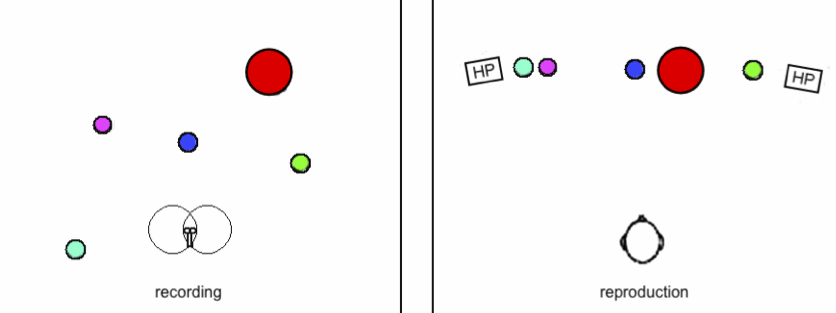tuga
Legal Alien
How many angels can dance on the head of a pin?
What's an angel?
How many angels can dance on the head of a pin?
Palaeolithic to Neolithic to PandemicHunting and gathering has been supplanted by clicking and collecting round these parts.
What's an angel?
Soundstage seems to me to only apply to rock/jazz/pop studio recordings manipulated by engineers in their studios with added reverb.
Yes it does. Mono gives you the reverb.No it doesn’t. You also need the venue’s 3D atmosphere.
The bloke on the left.....
Don’t think SMG has ever been mistaken for a blokeAm I ever glad that it isn't like the bloke on the right!!!
Don’t think SMG has ever been mistaken for a bloke
No it doesn’t at all. You have the information but it’s not 3D. It is centered and narrow between the speakers. Not realistic.Yes it does. Mono gives you the reverb.
Some equipment just doesn't seem to create much of a soundstage, though. Personally, I've always found Naim amplifiers don't really do stereo depth. That's not so much a criticism as an observation. I suspect that many of those who like Naim gear just don't value stereo depth highly - which is fine. I also suspect that two channel stereo just doesn't work for some people - i.e. some people just don't hear stereo depth, no matter how the recording was made, or the brand of equipment it's played on. My wife is like this. Maybe the OP is like this too. (In fact, maybe the OP uses Naim gear?)
The idea behind stereo recording/reproduction is to create a sense that music is happening in space. The word 'stereo' is shorthand for 'stereophonic', which derives from greek words meaning sound (phonic) and three-dimensional (stereo). (Note: the word stereo doesn't mean two channel. It's just that two-channel recording/reproduction is the commonest way to attempt to create a stereo - i.e. dimensional - sound image.)
Whether the illusion of dimensional space happens on playback depends heavily on the recording and the listening equipment. Arguably the best (or only) way to record two-channel stereo is to use a Blumlein pair of microphones - i.e a near-coincident 90 degree crossed pair. The recording should then be reproduced by two speakers positioned and angled to create the same layout.
In practice very few recordings are made like this. Most classicial recordings use multi-miked techniques, so their soundstage, in so far as it exists, is indeed something of a confection. For studio recorded multitrack rock/pop, soundstage is always a confection. Nonetheless many such recordings still create a more-or-less effective illusion of music in space.
Some equipment just doesn't seem to create much of a soundstage, though. Personally, I've always found Naim amplifiers don't really do stereo depth. That's not so much a criticism as an observation. I suspect that many of those who like Naim gear just don't value stereo depth highly - which is fine. I also suspect that two channel stereo just doesn't work for some people - i.e. some people just don't hear stereo depth, no matter how the recording was made, or the brand of equipment it's played on. My wife is like this. Maybe the OP is like this too. (In fact, maybe the OP uses Naim gear?)

I’ve always found soundstage depth and ‘height’ etc to be pretty irrelevant to the enjoyment of music - maybe they’re more important when discussing the accuracy of reproduction? I notice these things of course, but they don’t enhance musical quality as such, they’re more incidental, so I don’t think about them too much.
There's no such thing as soundstage height. You'd need upper and lower speakers to position an image above or below the horizon (or line which links your two speakers).
So then, why do I get the illusion of the picture at left with my simple stereo, that is depth.
Not at all what the picture at right shows, where everything would be so flat as to being boring.
The sounds can even come from the left and the right of the speakers themselves.
Like I said, your mind is tricked into believing that there's depth by the relative level of the phantom sources and complemented by ambience cues. And your expectations (e.g kick drum on the floor, standing vocalist above the speakers).
